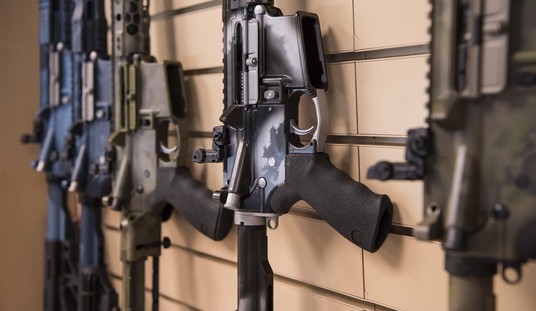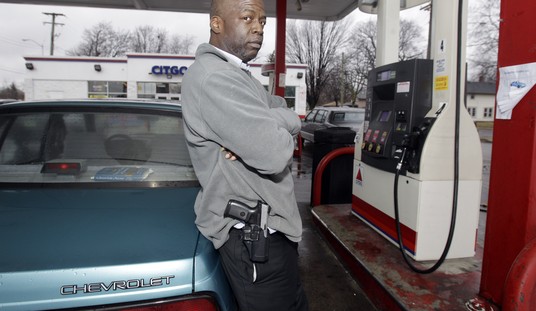The National Rifle Association announced on Thursday that it’s seeking Supreme Court review of a challenge to New York’s carry laws; a case that could soon present the nine justices with an opportunity to weigh in on the right to bear arms, not just to keeping them, as previous SCOTUS decisions have done.
The case is called NYSPRA vs. Corlett, and if you’re a Second Amendment legal nerd like me you can read the cert petition written by former Solicitor General Paul Clement along with longtime Second Amendment litigators Erin Murphy and Keven Neylan, Jr. here.
If, on the other hand, you want the TL;DR version, we’ve got you covered.
The Court is being asked to directly answer the question of whether the Second Amendment protects the right of the average citizen to carry a firearm for self-defense and resolve the splits in the various appellate courts below. The case has a good chance of getting the interest of at least four of the court’s justices, though there are procedural hurdles.
If you want to learn more about the details of the case, read on. Otherwise, keep your fingers crossed and look for an update on when the Court schedules NYSPRA vs. Cortlett to be considered in conference.
The Corlett case involves several individual plaintiffs as well as the NYSPRA and the NRA. Robert Nash, for instance, is a law-abiding resident of the state of New York who applied for a carry license in Rensselaer County. He was denied his permit even though there had been a string of robberies in his neighborhood and he’d even undergone training above and beyond what New York state law requires.
That didn’t matter, because Judge Richard McNally, who serves as the licensing officer for the county, decided that Nash “failed to show ‘proper cause’ to carry a firearm in public for the purpose of self-defense, because he did not demonstrate a special need for self-defense that distinguished him from the general public.”
Most gun owners and Second Amendment supporters would say “Yeah, but the general public has a right to carry, so he shouldn’t have to demonstrate some special need.” If we have the right to keep, as the Supreme Court has recognized in both Heller and McDonald, then we must also have the right to bear. The Supreme Court has yet to take a carry case, however, so as plain and simple as it might to most of us, some courts, like the Second Circuit Court of Appeals, have held that the right to bear arms is no burden whatsoever on “limiting handgun possession in public to those who show a special need for self-protection.”
While the cert petition doesn’t have to be granted by the Supreme Court, and in fact most petitions are turned away, there are some factors in favor of this particular case. Former Solicitor General Paul Clement is a familiar and welcome face for justices, which is not unimportant. Even more importantly, however, the case involves a fundamental question about a right that the Court has rarely weighed in on and one that has several appellate courts in disagreement with each other.
It’s the type of case that the Supreme Court is supposed to take, and with Amy Coney Barrett now on the bench, there should be at least five votes to accept the case (assuming Justice Roberts were to vote no). The biggest hurdle will be overcoming the decisions of the U.S. District Court and Second Circuit Court of Appeals, which both concluded that the question over New York’s carry laws had already been answered in an earlier case called Kachalsky.
Clement’s brief asks the justices to in essence set aside the question of standing and look at the facts; divided appellate courts, tens of millions of Americans unable to exercise their right to bear arms because they live in one of the handful of states that require “good cause” or a “justifiable need” to obtain a license to carry. This question has persisted and the Court has ducked the issue repeatedly by refusing cases like Peruta, which challenged California’s may-issue carry laws. Clement’s summation starkly reminds the Court of the consequences of inaction.
There is no Second Amendment issue more pressing than whether the fundamental, individual right to self-defense is confined to the home. While the vast majority of states have correctly affirmed the individual’s right to decide for him or herself whether to carry a handgun for self-defense, a minority of jurisdictions seem determined to control the very people and rights that the Second Amendment promises “shall not be infringed.”
That minority includes some of the nation’s most populous cities and states, located in circuits that have stubbornly resisted the controlling decisions of this Court in Heller and McDonald. As a result of decisions that failed to abide by this Court’s precedents, tens of millions of citizens are being deprived of individual, fundamental rights guaranteed by the Constitution. That is untenable.
The exercise of a fundamental right expressly guaranteed by the Constitution to all “the people” cannot be made to turn on where someone lives, any more than it can be made to turn on how “proper” or “special” the state considers the individual’s “cause” for wanting to exercise that right.
The argument is a good one, but I worry that the Court may decide not to accept this particular case purely on procedural grounds. That feels like the kind of resolution that Chief Justice John Roberts would like best, even though it just kicks the constitutional can further down the road.
A right delayed is a right denied, and the Supreme Court’s recognition of the clearly enumerated right to bear arms would ensure that the average law-abiding American could actually exercise their right to bear arms. Here’s hoping that any procedural objections can be overcome by the need for the Court’s action and opinion on this fundamental issue.









Join the conversation as a VIP Member